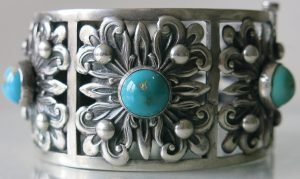ART DECO ELEGANCE AND STYLE
Demétre Haralamb Chiparus (16 September 1886 – 22 January 1947) was a Romanian Art Deco era sculptor who lived and worked in Paris, France. He was one of the most important sculptors of the Art Deco era.
Demétre Chiparus was born in Dorohoi, Romania, close to the Ukrainian border, into a reasonably wealthy family. However, for most of his life and career, he lived and worked in the French capital city of Paris a mecca for art and artists in the early 1900’s and the post-war roaring decadence of the twenties.
In 1909 aged 20, he moved to Florence, Italy where he studied with the Italian sculptor Raffaello Romanelli (1856 to 1928). Romanelli works include the Monument to Carol I of Romania, in Peles Castle; a monument to Czar Alexander II in Russia, the Garibaldi Monument in Siena, Italy and a monument to John Wister in Philadelphia, Pennsylvania.
In 1912 Demétre enrolled in the famous art school École des Beaux-Arts in Paris, France. He was a frequent attendee at the classes of academic sculptor Antonin Mercié.
In 1914 Chiparus held his first exhibition in the Salon. His first creations were most often groups of small figures, predominantly playing children or other ordinary subjects, presented in a relatively realistic style rather than Art Deco.
By 1918 Demétre Chiparus had set up his first atelier at 24 Rue Barrault in the 13th arrondissement in Paris. From 1920 onwards his distinctive style grew, expanding to encompass much larger, thinner, more supple, graceful and ever more sophisticated female figure groups.
From 1923 until 1928 he exhibited his growing body of work in the Paris Salons. From 1667 the Salon de Paris was the official art exhibition of the Académie des Beaux-Arts. From 1748 to 1890 it was probably the greatest annual art event in Europe.
In 1928 Chiparus moved his atelier to his new home at Neuilly-sur-Seine. In 1947 Demétre Chiparus died of a stroke. He was aged 58 and returning from studying animals at the zoo in Vincennes.
STYLE AND DISTINCTIVE FEATURES
Sculptures of Demétre Chiparus represent the classical manifestation of Art Deco style in decorative bronze ivory sculpture.
His sculptures are characterized by exquisite modeling of the female form featuring long and slender models, sometimes with stylish hounds or athletic equipment and always with a very stylized appearance, superb detail and an abundance of life and movement. Combining highly decorative and elaborate details with alluring touches of Art Deco style.
His slender long-legged and very life like figures feature glowing faces of crisp white ivory, above sensual and glamorously decorated outfits, inspired by the artists and dancers from Parisienne theatres, the Folies Bergere and Russian ballet troupes.
The costumes and jewelry of the figures were also often influenced by the Orient, and his figures are usually mounted on a marble or onyx pyramid or ziggurat, (a Mesopotamian massive structure).
Traditionally, four factors of influence over the creative activity of the artist can be distinguished: Serge Diaghilev’s Ballets Russes, Acient Egyptian art and French Theatre. Quite often, Chiparus used the photos of Russian and French dancers, stars and models from fashion magazines of his time.
After the Tomb of Tutankhamun was discovered in 1922, the art of ancient Egypt and the East came to French fashion and is also reflected in the creative activity of Chiparus.
Several sculptures by Demétre Chiparus and Claire Colinet represent queen Cleopatra and Egyptian dancers. The sculptures of Chiparus reflect his time and 1920-1930s sentiment of “folle”. Coming from the oldest French tradition of high-quality and extra-artistic decorative arts, the sculptures of Demétre Chiparus combine elegance and luxury, embodying the spirit of the Art Deco epoch.
Figures are predominantly executed in bronze and ivory (using the Chryselephantine technique), which makes them dazzling and highly decorative.
Chiparus did very rarely, produce other sculptures using terracotta, porcelain, spelter or marble. These can be very hard to find.
He also produced some of his Art Deco figures in plasteline. He then sold the reproduction rights to prestigious Parisian workshops & foundries such as Edmond Etling & Cie, and Les Neveux de J. Lehmann.
These high-quality workshops and foundries then produced multiples of these figures, which feature very high-quality castings demonstrating the great detail in the costumes and clearly recreate the life and movement in Chiparus figures.
They can also be carved with Egyptian motifs, inspired by the discovery of Tutankhamen’s tomb in 1923. (This also applies to other Art Deco sculptures of the period). The bronze components on the Chiparus sculptures should be decorated in cold-painted enamel and have crisp well-defined details.
Signatures are cast in the bronze or engraved on a base of at least two colored marbles. The sculptor signed almost all of his works with “D. H. Chiparus”, which he mainly etched on the base of each figure.
COLLECTING CHIPARUS SCULPTURES
Collector interest in the work of Chiparus appeared in the 1970s and has flourished since the 1990s. A major collection of Chiparus’ work is on display in the permanent
collection of Casa Lis, the Art Nouveau and Art Deco museum in Salamanca, Espana.
In the Last two decades, auction and saleroom prices for Chiparus’s work have risen sharply. Forty years ago, any Art Deco collector could have picked up a Chiparus sculpture from any regular antique dealer, for just a few hundred pounds. Genuine Chiparus sculptures are rare and can fetch significant sums at auction.
Today, that same piece in genuinely good condition could set you back anywhere from £15,000 to £200,000 from a high-end auction house.
For example, in October 2015 the prestigious Straus & Co, auction house of Cape Town, South Africa featured a beautiful Chiparus figure entitled Les Amis Toujour, “friends forever”. The sculpture features a central female figure of patinated and cold-painted bronze with typical Chiparus ivory face and neck. She stands adorned by a pair of hounds at her feet.
The group is mounted on a brown onyx base, and Straus & Co had an auction estimate of R300,000 to R350,000 (roughly $25,000 USD).
However, the same or similar figure was sold on 15th December 2010, at Christies Auction House in New York, where the auction estimate was also a conservative $18,000 USD to $24,000 USD, but the actual price realized was a more realistic $68,500 USD




